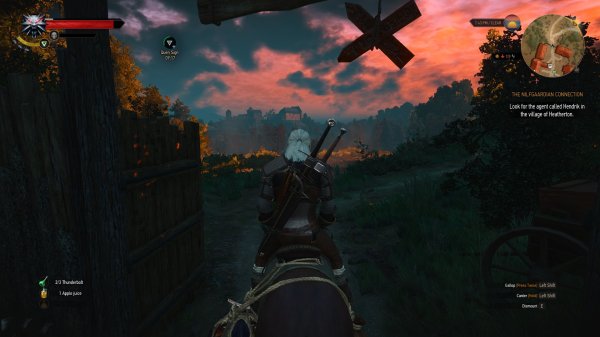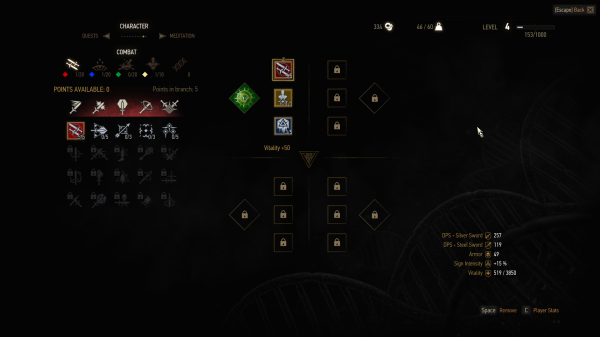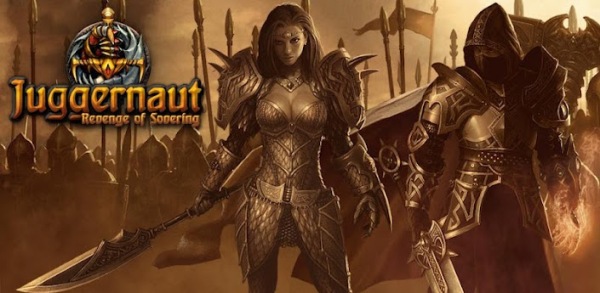The last MMORPG I played and had heavily invested hours of leveling up my characters on different classes was Perfect World which offered a classic seamless open world MMORPG where one can get easily lost on exploration alone. The grind still catches up to you though and after more than 1000 hours logged and characters at level 106. I started staying away from MMORPGs for good while and played PC Game titles such as Prince of Persia’s Franchise, Skyrim, and Assassins Creed Saga from AC1 to Syndicates. I’ve noticed games are evolving and are not just offering cool powers to bring down your enemies, action, magic, adventure, or lore. Open world games that offer a lot of content for discovery and freedom to explore the environment have been popping out for the last 3 years from Skyrim, Dragon Age Inquisition, and the game that is still setting the benchmark for open world PC game titles The Witcher 3 Wild Hunt.
After a while, you miss that interactive gameplay with other people and start looking for new game titles that might offer something different. I’ll be honest playing single player PC game titles can get pretty lonesome. So I started browsing steam for new titles and I found something called “Warframe” with its game trailer saying “Ninjas Play for FREE!!!! (OMG even better it’s for free!!!) I know I’m such a cheap bastard but gaming can be an expensive hobby and I would like to see some free stuff out there can offer some really interesting content.
I started playing Warframe in January last 2016 and after 2042 hours or more logged over at Steam. The game is among one of the most-played games available on Steam. Digital Extremes attributes the success of the title to the frequent updates they are developing for the game and the game’s fanbase. Digital Extremes describes the game as a “rogue success”, as the game is able to secure and sustain a large number of players without gaining significant attention from other people. More than 26 million players have played the game upon launch. It’s been a year of extensive gameplay of a refreshing new free to play MMORPG and I can’t remember the last time I got hooked on a free to play game title.
Warframe is a free-to-play cooperative third-person shooter video game developed by Digital Extremes for Microsoft Windows, PlayStation 4, and Xbox One. In Warframe, players control members of the Tenno, a race of ancient warriors who have awoken from centuries of cryosleep to find themselves at war with different factions.
In Warframe, players control the Tenno, a race of ancient warriors who have awoken from centuries of cryosleep to find themselves at war with the Grineer, a race of militarized and deteriorated human clones; the Corpus, a mega-corporation with advanced robotics and laser technology; the Infested, disfigured victims of the Technocyte infection; and later the Sentients, an alien force of mechanical beings returning from the Tau system after being driven back centuries ago. To fight back, the Tenno use remotely controlled biomechanical suits to channel their unique abilities — the eponymous Warframes.[1] Later missions reveal that the Warframes are actually biomechanical shells which are connected to the consciousness of the actual Tenno, human children who were given unpredictable powers by the Void. Those powers led to them being demonized and they were exiled into stasis pods on the Moon. The Tenno and their Warframes were used by the Orokin Empire in a desperate fight against the Sentients and stopped their invasion. However, for unknown reasons, the former turned on the latter and caused the Empire to collapse. The Empire shattered with the remnants becoming the Grineer and the Corpus while the Tenno were placed in stasis until centuries later.
GAMEPLAY
The player may engage in PvE content through missions or PvP content through “Conclave”. There are also “Quests”, which are a set of PvE missions with a narrative or story behind them.
Available missions are scattered across the planets of the solar system, the moons Phobos, Europa, Lua (Earth’s moon), and dwarf planets Pluto, Ceres, Eris, and Sedna. Players can also access missions set in a pocket dimension known as The Void through completing junctions on other planets or through Void Fissures, small volatile rifts which react with acquirable Void Relics.
The titular Warframes are biomechanical suits that possess a set of 4 active abilities as well as a passive ability, as well as varying attributes and statistics. The player begins with a choice of Warframe among 3 initially offered. Additional Warframes can be acquired through various in-game activities, such as mission rewards, quest rewards, etc. Players can possess all Warframes in their inventory but may only equip one at a time. Warframes, as well as various other elements in the game, are highly color-customizable. New Warframes are developed and released every 3-5 months.
The players are equipped with three weapons: a primary weapon (such as a rifle, bow, or shotgun), a secondary weapon (typically a pistol, but sometimes ranged bladed weapons like kunai), and a melee weapon (such as swords, axes, and hammers). All equipment can be upgraded with “mods” that drop from enemies or are given as mission rewards; these can be installed, removed and upgraded into slots on the piece of equipment. Companions can also be equipped and accompany Tenno on missions, each with their own powers. These can be floating mechanical sentries, or, following a quest, players can earn their own Kubrow, a canine like monotreme with a horned nose, or a Kavat, a feline like animal with reptilian features. Warframes, equipment, companions as well as various other elements in the game can level up, which increases attributes and/or allowing more “mods” to be equipped.
Players rest and travel in their own small, customizable ship in-between missions. Up to four (Trial missions allow eight) players work together to complete missions, such as eliminating enemies, retrieving data from terminals, assassinating high ranking/dangerous targets, defending an artifact, or surviving as long as possible, before they can be extracted and the mission considered a success. Missions are ranked on a level basis, indicating the strength of opponents the player will face. There are various endless wave missions, which enables the players to continue for as long as they like, with increasingly difficult enemies and proportionally greater rewards.
The camera is positioned over the shoulder for third-person shooting. The player can jump, sprint, slide, and roll, as well as combine techniques to quickly move throughout the level and avoid enemy shots. The game also allows players to utilize parkour techniques to evade enemies, bypass obstacles or gain access to secret areas. Maps are generated procedurally with pre-built rooms connected together so that no levels have the same layout. At times, the player will be required to hack security terminals by completing a puzzle mini-game within a small time limit to proceed in the missions. Credits, ammo, resources, and mods can be found in set locations, such as lockers and destructible containers, as well as dropped by enemies. If a player’s Tenno loses all its health, that Tenno is down; if the player is alone, they can expend one of their revives for that mission to be returned to full health, while if with other players, another player can revive that Tenno. If all Tenno are down and no one revives, or in the case of certain missions if the objective is not met, the mission ends prematurely with players forgoing any rewards beyond what they have already collected.
New weapons, Warframes, equipment, and blueprints to construct such equipment can be purchased in the market, using either Credits earned in-game, or Platinum, a premium currency that can be purchased via microtransaction or traded for in-game.[2] Also, some blueprints are dropped by certain enemies. Gear defined by blueprints can be constructed using resources collected from missions. Players can engage in trading/selling of some of earned blueprints and gears as well.
Waking Up
After a short cutscene, players start off with a choice of three starter Warframes: Excalibur, Mag, or Volt (A year back it was only Excalibur offered as a starter frame). Other Warframes can be purchased using Platinum or crafted in the Foundry later on in the game. Primed variants of the standard Warframes are also available in the game and are received in the form of prime blueprints as a reward for unlocking void relics. The game starts off with a tutorial mission that walks players through the basics of movement and combat. Unfortunately, there is no option to skip the tutorial since the tutorial mission is part of the game’s story. The tutorial mission will have players trying to evade capture and escape Grineer forces with help from the Lotus. After successfully escaping on the player’s old ship, they then proceed to go on missions to repair the ship’s damaged segments. Oris, the ship’s AI, literally has a few screws loose. Whether it’s from sustaining damage or from being abandoned and left alone for too long, we’ll never know for sure, but that AI definitely has some issues. Some of his lines really had me cracking up, especially the part about being self-destructed during a bout of depression early in the game. Replacement segments for the ship are acquired by completing the first few missions. The first mission to retrieve the communications segment can only be done solo. Succeeding missions can then be completed alone or with help the help of friends through the game’s cooperative mode.
Carrying Out Orders
After the tutorial mission, the game continues as a campaign that slowly acquaints players with Warframe’s gameplay features, such as crafting and upgrading, while revealing the story of the Grineer’s plans for domination and why the Tenno need to stop them. Missions can be accessed through the ship’s cockpit. After completing the campaign, players can choose from a variety of missions located in different planets and moons across the solar system. Missions range from simple extermination and sabotage to more difficult ones, like survival and rescue missions. Some missions also take place in space. Space missions, however, require that a player’s Warframe is equipped with Archwings – the first of which can be acquired by completing a quest upon reaching Mastery Rank 2. Aside from the loot that players pick up during the course of the mission, successfully completing missions also rewards players with credits, items for crafting, as well as Modules (Mods for short) to upgrade their Warframe parts. Achievements, like getting a certain number of stealth kills or killing a certain number of enemies, are also automatically awarded to players once they meet the requirements.
The Way of the Ninja
Warframe’s controls are easy enough to get used to and is quite similar to typical FPSs. The environment allows players to sprint, slide, jump, do backflips, and run on walls to gain an advantage over enemies during combat. Combat can be as fast or slow as players want it to be. They can opt for the shock and awe method or they can use stealth to their advantage, depending on their preferred playstyle. Mission levels and enemy positions are randomly generated using pre-designed rooms and halls, so no two missions are the same. However, some of the levels still look pretty much the same, even if they’re randomly generated, and tend to get old fast, especially when grinding for that rare item needed to craft the weapon of your dreams. Even though combat is fast-paced and fun, Warframe feels a bit too easy sometimes.
End Game: FashionFrame
Warframe features an in-depth customization system that lets players customize basically everything about their Warframes, from the type of helmets and shoulder pads to their overall color scheme. Players can also choose from a variety of weapons depending on the mission or their playstyle. Feel like going Rambo on the Grineer? Strap on an assault rifle and a sub-machine gun, and blast your way through their ranks. Want to take on a rescue mission with a bit of stealth and finesse? Equip a bow, throwing knives, and a futuristic katana and stealth-kill your way through the whole mission.
Bigger and Better
Weapons and Warframes can both be customized and upgraded using Mods that players acquire as loot, as rewards for completing missions, or by purchasing them from the item shop. Mods can also be bought, sold, or traded with other players. Rare mods can even be sold for Platinum, the game’s premium currency. Another way to get Mods is to Transmute four unranked Mods to generate one random Mod. Weapon Mods are different from those used for Warframes and are automatically sorted in the Arsenal menu. Mods, when equipped, give bonuses to a weapon or to a Warframe’s stats or abilities. Keep in mind, though, that the number of equipable Mods and are limited by the available Mod capacity. The number of Capacity points a Mod uses up is shown in the Mod description. Mods can be swapped out at any time by visiting the ship’s Arsenal bay.
Weapons gain Affinity or XP when used in combat and increase in rank when the Affinity points reach a certain level (up to a maximum of 30 levels). Mastery Points are also awarded to players when one of their weapons levels up. Players gain Mastery Ranks when their Mastery Points reach a certain level. Higher Mastery Ranks unlock additional weapons and Warframes and increase a player’s daily trade limit.
Like weapons, Warframes also gain Affinity points and gain rank up to Level 30. Warframes are rewarded Affinity points by using abilities, killing enemies, reviving fallen teammates, completing objectives, or by simply completing the mission. Aside from getting additional Mod capacity, Warframes also get passive increases to health, shields, and energy capacity as well as Mastery Points. Warframe abilities are also unlocked automatically and improve every few levels.
Foundry
The Foundry is a section of a player’s ship where crafting takes place. The player can craft Weapons, Warframes, Archwings, and Sentinels (mechanical “pets” that assist in combat), provided that they have the items and blueprints required for crafting. Players then have to wait for the crafting process to finish, which happens in real time. Items with long build times can be left building since the process continues even when the player is offline. Players can also spend Platinum to instantly complete the process. Different items, however, require different amounts of Platinum to instantly finish.
Check this trailer compilation on Warframe’s content on Youtube
Final Verdict – One of the BEST MMORPG in its own Genre.
For a free-to-play game, Warframe is a great MMO that can keep players entertained and hold their attention for hours on end unless you’re the type that’s easily put off by grinding for items because this game has more than its fair share of repetitive grinding. The lack of endgame content and goals may also deter hardcore players. Even so, it’s still worth checking out, even if it’s just for the campaign or for players looking for a change of pace from their usual mainstream games. The community is awesome and it’s been the most non-toxic gaming environment I have ever been into. Overall, I’ve hooked and two tiers away from its highest mastery level. Warframe is a fun game with huge potential. Aside from the visual eye-candy, the fast-paced gameplay and ninja/parkour combat alone should be enough to entice even the most finicky player. I mean, who doesn’t love ninjas?
NOTE: If you want to try out the game, click my In Game Name and join our Storm Clan be sure to add me as a friend so I can help your journey as well.
IGN: Mordhekhai
Clan: Amestris
Position: Ex-Council Member/ Discord Moderator/ Sage
Mastery Rank: Rank 24































